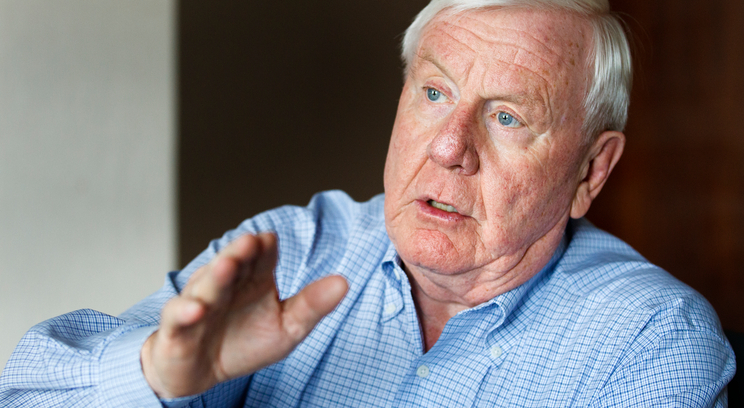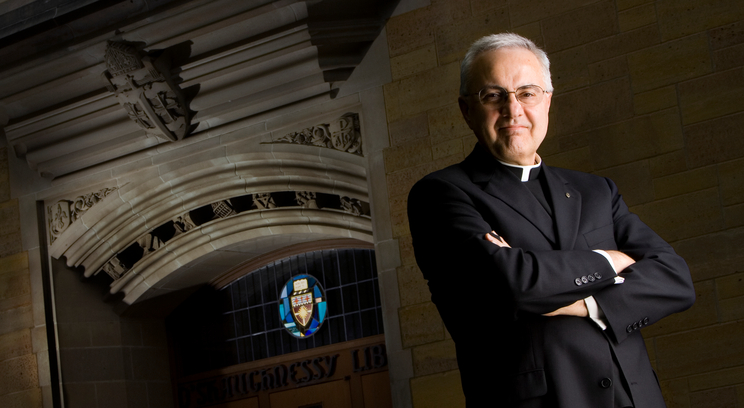A determined and common-sense work ethic always has characterized Tom Madison.
The trait showed up when he was an 8-year-old south Minneapolis boy who had two newspaper routes and later bagged groceries at a neighborhood store.
The trait was present throughout a three-decade career during which he rose from a construction splicer’s helper at Northwestern Bell Telephone to president of the company and then as president of a US West Communications division.
And the trait still motivates him today as president of management consultant MLM Partners and board member of seven companies and nonprofit organizations – service that earned him the No. 1 spot on Minneapolis-St. Paul Business Journal’s "Hardest-working Board of Directors" list in 2009.
"I’m not afraid of hard work," Madison said. "I just applied all of the principles that I learned on my paper routes as I went through my jobs in the phone business."
Madison saved money from those paper routes to buy a black-and-white television for his family. His dad was a railroad engineer, his mom managed a bakery and he had a younger sister, and they had a comfortable middle-class lifestyle.
"That’s just the way it worked in those days," he said. "We had a nice neighborhood and home, but you had to work as a kid if you wanted spending money for pleasure. There were good learning experiences in those jobs."
He smiled as he told about one experience. He not only delivered newspapers but also collected for them, and some customers would try to avoid him.
"I learned how to sneak up on a house," he said. "You didn’t come up the front steps. You had to learn the habits of each customer, and their personalities. If you gave good service, you could expect a good tip. That meant delivery right to the front door, and inside the door if it was raining."
Madison also bought his first car, a 1941 four-door Chevrolet, at age 15 with earnings from his jobs. He drove the car to Roosevelt High School, where he graduated in 1953, and the University of Minnesota to pursue a degree in aerospace engineering and an interest in becoming an astronaut.
But he left school halfway through his freshman year and took a job with Northwestern Bell.
"We’d go into manholes, splice wires together and slip a sleeve over the copper to protect the wires," he said. "I also had to vent the manholes and clean up after the splicer."
Madison later worked as a lineman, installing telephone poles and attaching cables and wires, and he also installed residential telephones. He learned a lot on those jobs, including one important lesson: "Working at Northwestern Bell was a wakeup call, telling me I didn’t want to do this work for the rest of my life," he said. "I knew I needed to go back to school and prove I could become an engineer."
Tom Madison and St. Thomas
• Served on the Board of Trustees from 1981 to 1997 and rejoined the board in 2011. He is on the Investment and Student Affairs committees.
• Represents US West, with his late wife, Pat, and their three children, in one of 13 fresco pillar portraits in the Terrence Murphy Hall atrium on the Minneapolis campus. St. Thomas designated US West as one of the founders of the Minneapolis campus, which opened in 1992.
• Believes St. Thomas’ biggest challenges are related to the increasing costs of higher education. Students need more financial aid, he says, and the question always will be asked about whether a college education is worth the cost: "I think it is, and I believe St. Thomas is positioned well, but I’m worried about debt loads. We also need to ask, ‘Can we be everything to everybody, or do we need to focus more?
When he graduated in 1959, Madison had a family – wife, Pat, and the first two of their three children – and a decision to make. He had 10 engineering job offers from around the country, but he decided to stay in Minnesota and work for Northwestern Bell because "the people were good, the benefits were good and the culture was good. It was the right fit."
And it was a fit that lasted 33 years, starting with a 10-month training program in which he worked in every department. When the training ended, he chose to work in the plant department as a service foreman who managed telephone installers.
Madison quickly advanced into other supervisory jobs, usually requiring moves around the Midwest. He spent four years in Redwood Falls, Minn., as a district plant superintendent, before returning to Minneapolis for a year. Then it was off to Nebraska, North Dakota and South Dakota; all told, he held 16 positions, including president and chief executive officer beginning in 1985 in Omaha.
"I don’t think I ever aspired to be CEO," he said. "I first wanted to be a district plant manager, and then my goal was to be a department head, and then an officer. … All of those experiences helped me in knowing that I could manage the company. I had ‘been there, done that.’"
Dick McCormick, the retired chairman of US West, worked with Madison for nearly 40 years and admired him because of his energy level and his ability to analyze and resolve issues.
"Tom always had high expectations of himself and the people who worked with him," McCormick said. "He was demanding and tough but fair, and a good communicator. People always knew where they stood with him."
The breakup of the AT&T-Bell system led to the establishment of seven regional operating companies, including Denver-based US West (which later became Qwest and today is Century Link). Madison held three senior executive positions in Minneapolis before retiring in 1992.
His inclination was to do consulting and venture capital work, and the opportunity to serve on corporate boards intrigued him. Service on the Minnesota Mutual Life Insurance board led to an interim position as vice chairman and co-CEO in 1994, and more companies approached him about joining their boards. His biography lists more than 40 boards over the last two decades.
"I could contribute and I could help," he said. "As a CEO, I faced a lot of different challenges and opportunities. I had been through the mill, so my goal was to help the management of companies avoid the kinds of mistakes I had made."
Digital River of Minnetonka is one example. Joel Ronning founded the global e-commerce company in 1994 and brought Madison onto the board the following year. They are still together – Ronning as chairman and CEO of a company with 1,400 employees and Madison as lead director.
"Tom is very focused," Ronning said. "He has ‘high-low’ capabilities. He can go down into the process to make your organization work better, and then he can go to the highest levels and talk about governance issues in an international area."
Madison has stayed on the Digital River board this long because he closely identifies with its goals and its fundamental strategy of using the Internet to spur business growth.
"I have enjoyed the challenge and the fun of new, innovative technology," he said. "Every company is faced with challenges and with changes in technology, and if the company can’t adjust, it won’t exist five years from now."
He held up his cell phone, a symbol of change in the way he has communicated during his lifetime. When he started at Northwestern Bell, people used clunky rotary-dial telephones tied to land-based lines. Today, they carry phones in their pockets and rely on them to access a world of information.
"If you don’t have one of these," he said with a nod to his cell phone, "you’re in trouble. Every single company out there is faced with technological change and how it impacts their bottom lines. The strategies of five years ago and today are significantly different.
"It’s fun to see how companies evolve, and I think I can give them some valuable advice."
Read more from St. Thomas Magazine.







